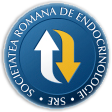
- Login
- Register
- Home/Current Issue
- About the journal
- Editorial board
- Online submission
- Instructions for authors
- Subscriptions
- Foundation Acta Endocrinologica
- Archive
- Contact
 Romanian Academy
Romanian Academy
 The Publishing House of the Romanian Academy
The Publishing House of the Romanian Academy

ACTA ENDOCRINOLOGICA (BUC)
The International Journal of Romanian Society of Endocrinology / Registered in 1938in Web of Science Master Journal List
Acta Endocrinologica(Bucharest) is live in PubMed Central
Journal Impact Factor - click here.

-
General Endocrinology
Frentescu L, Budisan L, Benga G
The Profile of Cystic Fibrosis Transmembrane Conductance Regulator Gene Mutations in Patients From Romania in Relationship with the Ethnogenesis of the Romanian PeopleActa Endo (Buc) 2013 9(3): 349-360 doi: 10.4183/aeb.2013.349
AbstractAim. To correlate the profile of CFTR gene mutations in patients from Romania with the ethnogenesis of Rumanian people. Patients and methods. One hundred sixty-five patients with clinical diagnosis of CF and elevated values at sweat test were included in the study. Samples of EDTA-anticoagulated blood were obtained by venipuncture, sent to our laboratory and DNA was extracted from leukocytes. For the majority of blood samples we used standardized methods for analysis of at least 18 common mutations. Ten DNA samples were analyzed for 38 CFTR mutations with a kit recently introduced in our program of investigations of CFTR gene mutations.Results. The most frequent mutations in CF patients from Romania are F508del (53.6%), G542X (4.6%), W1282X (2.1%) and CFTRdele2,3(21kb) (1.2%). Other mutations were detected at frequencies less than 1.0%. The profile of the CFTR gene mutations in Rumanian patients appears to be very different from its counterpart profile in Romania’s neighbour countries and rather similar with the profile of mutations in France, Italy and Spain (which, similar to Romania, are Neo-Latin countries). A notable difference between Romania and these Neo-Latin countries is the presence of a Slavic mutation, CFTRdele2,3(21kb) in Rumanian patients; this might reflect the Slavic component in the ethnogenesis of Rumanian people.Conclusion. The profile of the CFTR gene mutations in Rumanian patients confirms the overwhelming evidence regarding the ethnogenesis of Rumanian people from the admixture of Dacians or Getae (the ancient autochtonous inhabitants of the territory of present-day Romania) with Roman (or Romanized) legionnaires and colonists, forming the Daco-Roman population (the basis of Rumanian people), who assimilated the Slavs that entered in the territory of present-day Romania in the VIth century. -
Clinical review/Extensive clinical experience
Greere DI, Grigorescu F, Manda D, Lautier C, Poiana C
Insulin Resistance and Pathogenesis of Postmenopausal OsteoporosisActa Endo (Buc) 2023 19(3): 349-363 doi: 10.4183/aeb.2023.349
AbstractOsteoporosis (OP) is a disease predisposing postmenopausal women to fractures, and often accompanied by insulin resistance (IR) and metabolic syndrome (MetS). Previous studies provided contradictory results concerning prevalence of MetS in postmenopausal OP. To better understand the pathogenesis of IR, we reviewed cellular and molecular aspects and systematically reviewed studies providing homeostasis model assessment (HOMA) index. Bone is an active endocrine organ maintaining its integrity by orchestrated balance between bone formation and resorption. Both osteoblasts and osteoclasts contain receptors for insulin and insulin-like growth factor-1 (IGF-1) operating in skeletal development and in the adult life. Defects in this system generate systemic IR and bone-specific IR, which in turn regulates glucose homeostasis and energy metabolism through osteocalcin. Examination of genetic syndromes of extreme IR revealed intriguing features namely high bone mineral density (BMD) or accelerated growth. Studies of moderate forms of IR in postmenopausal women reveal positive correlations between HOMA index and BMD while correlations with osteocalcin were rather negative. The relation with obesity remains complex involving regulatory factors such as leptin and adiponectin to which the contribution of potential genetic factors and in particular, the correlation with the degree of obesity or body composition should be added. -
Editorial
Lempidaki P, Zervoudis S, Michou V, Eskitzis P, Iatrakis G, Mastorakos G
Breast Cancer and Prolactin: A Lifetime RelationshipActa Endo (Buc) 2024 20(3): 349-355 doi: 10.4183/aeb.2024.349
AbstractProlactin is a multifunctional hormone produced by the pituitary gland, essential for more than just the growth of mammary tissue. It plays a crucial role in lobuloalveolar development and lactation. Understanding multifunctional hormone, prolactin, and its role in breast tissue is a promising avenue in our fight against breast cancer. This paper aims to shed light on the physiological mechanisms of prolactin in breast cancer, its prognostic value, and potential therapeutic approaches, offering a significant step forward in our battle against this disease. -
Editorial
Piskinpasa H, Dogansen SC, Metin D, Gumusoglu AY, Altinay S, Sipahi M, Dogan B, Apaydin S
Is There a Relationship Between Tuberous Sclerosis Complex and Insulinoma?Acta Endo (Buc) 2022 18(3): 350-354 doi: 10.4183/aeb.2022.350
AbstractTuberous sclerosis complex (TSC) is an inherited neurocutaneous disease characterized by multiple hamartomas in multiple organs. However, there is limited evidence about neuroendocrine tumors (NETs) in patients with TSC, and routine screening of NETs is not recommended in the guidelines. Insulinomas are also an extremely rare disease. According to our knowledge, we presented the 10th TSC patient diagnosed with insulinoma in the literature. Thirty-two years old male patient diagnosed with TSC at the age of 27 due to typical skin findings, renal angiomyolipoma, history of infantile seizures, and cranial involvement was referred to our clinic. The main symptoms of the patient were palpitations, diaphoresis, confusion, and symptoms were improved after consuming sugary foods. Seventy-two hours fasting test was performed, and a low glucose level at 41 mg/dl, a high insülin level at 21.65 μIU/mL, and a high C-peptide level at 7.04 ng/mL were found at the 8th hour. In addition, a 12x7 mm lesion in the pancreatic tail was detected in abdominal imaging. Ga-68 PET-CT (gallium-68 positron emission tomographycomputed tomography) detected an increased uptake of Ga-68 in the pancreatic tail. The patient underwent distal pancreatectomy, and pathological evaluation was consistent with an insulinoma. The patient’s symptoms improved postoperatively. Since in nearly all TSC cases, as in our case, neuropsychiatric abnormalities, such as epilepsy, are one of the main disease manifestations, and these symptoms may be confused with the clinical manifestations of hypoglycemia in insulinoma. Therefore, patients with newly developed neurological symptoms and behavioral defects should be evaluated in terms of insulinoma. -
Case Report
Lutescu I, Gherasie A, Ron-El R
Fertility beyond genetics in Turner syndromeActa Endo (Buc) 2005 1(3): 351-358 doi: 10.4183/aeb.2005.351
AbstractIntroduction: In Turner Syndrome (45XO) and Turner mosaicism, fertility is reported to be extremely low. We encounter premature menopause, due to premature ovarian failure. When these patients conceive spontaneously, such pregnancies have an increased percentage of abortions, malformations and stillbirths. These patients should be counseled for prenatal genetic testing.\r\nMaterial and Methods: We discuss the case of a patient with Turner mosaicism (45XO,46XX), who successfully conceived due to IVF procedures.\r\nResults: The patient, a women with Turner mosaicism encountered secondary amenorrhea due to premature menopause. Because of her diagnosis she was proposed for IVF with egg-donation. She was on HRT for two years before. At the time of embryotransfer her endometrium was prepared with estrogens and progesterone. The embryotransfer was done at 48 hours and the patient received two of the four embryos; the other two embryos were frozen. An HCG done at 14 days after embryo-transfer revealed no pregnancy. After two months she decided to have another embryo-transfer with the frozen embryos.The endometrium was prepared in the same manner. This time an intrauterine pregnancy was reveled on vaginal ultrasound. The patient denied genetic tests; she had an uneventful pregnancy and delivered a healthy baby at term.\r\nConclusion: The new techniques of in vitro fertilization have proved very useful for patients with Turner syndrome and Turner mosaic syndrome. Oocyte donation can be an optimal alternative. This can be a way to manage infertility in these cases. -
Case Report
Balmes E, Burcea A, Ioachim D, Strambu I, Badiu C
Sarcoidosis with pulmonary and thyroid determination coexisting with Hashimoto's diseaseActa Endo (Buc) 2007 3(3): 351-358 doi: 10.4183/aeb.2007.351
AbstractSarcoidosis, a disease of an unknown etiology, is characterized by the presence of noncaseating granulomas that are most often found in the intrathoracic lymph nodes, lung and in other organs. Hashimoto' thyroiditis is one of the most common organ-specific autoimmune diseases. Although several reports describe the coincidence of sarcoidosis and Hashimoto's thyroiditis, the understanding of the relationship between these two disorders is limited. A 50 year old woman was admitted for cervico-thoracic goiter having a long history of nodular goiter for about 25 years and being suspect of pulmonary sarcoidosis. A chest radiograph and CT scan showed plunging intrathoracic goiter, lymphadenopathy with a pulmonary interstitial infiltrating process. A tracheo-bronchial lung biopsy revealed non-caseating granulomatous lesions consisting of epithelioid cells, confirming sarcoidosis. Angiotensin converting enzyme was high, therefore the patient was diagnosed as having sarcoidosis. The thyroid gland showed signs of goiter, tenderness and nodularity, without latero-cervical adenopathy. Thyroid function tests were normal and thyroid antibodies were positive. For cervico - thoracic goiter, total thyroidectomy with cervical lymph-adenomectomy was practiced. The histopathological exam demonstrated thyroid sarcoidosis, lymph nodes involvement and chronic thyroiditis. -
Endocrine Care
Li Q, Zhao Y, Wang YP, Yang Y, He SM, Zhang X, Wang Z, Luo LY
Correlation between Serum 25(OH)D and Abdominal Visceral Fat Area in Patients with Type 2 Diabetes Mellitus in the Context of Different Bone MassActa Endo (Buc) 2021 17(3): 351-357 doi: 10.4183/aeb.2021.351
AbstractObjective. To investigate the correlation between serum levels of 25-hydroxy vitamin D [25(OH)D] and the visceral fat area of patients with type 2 diabetes mellitus (T2DM) in the context of different bone mass. Materials and Methods. A total of 180 patients with T2DM were randomly selected for bone mineral density (BMD) examination. According to the results, they were divided into three groups: T2DM normal bone group (group A); T2DM bone mass reduction group (group B); T2DM osteoporosis group (group C). Result. Serum 25(OH)D levels in NC group, A group, B group and C group decreased in turn, and Visceral fat area (VFA) in group B and group C were significantly higher than those in group A and NC [(29.41±4.87) vs. (22.76±4.23) vs. (17.78±3.61) vs. (9.70±3.01), P<0.05], [(117.76±38.79), (125.08±37.90) vs. (89.79±26.51), (97.53±28.61), P<0.05]. Pearson correlation analysis showed that L1-L4 lumbar vertebrae bone density was positively correlated with 25(OH)D and VFA; left femoral neck bone density was positively correlated with 25(OH)D, and negatively correlated with VFA. Conclusion. Serum 25(OH)D and VFA may be associated with the development of T2DM combined with OP. -
General Endocrinology
Inci S, Nar G, Balkan F, Aksan G, Degirmenci H, Hamur H
Effect of Human Gestational Diabetes Mellitus on Arterial StiffnessActa Endo (Buc) 2014 10(3): 352-362 doi: 10.4183/aeb.2014.352
AbstractBackground. The present study aims to evaluate the parameters for aortic stiffness by comparing gestational diabetes mellitus (GDM) with a healthy control group via transthoracic echocardiography. Methods. This was a cross-sectional study involving monitoring of 62 pregnant women (33 with GDM and 29 with uncomplicated pregnancy as controls) during the third trimester. The aortic strain, aortic distensibility, and aortic stiffness values were measured via transthoracic echocardiography. Measurements of GDM group were repeated after 6 months. Results. Blood pressure levels, heart rate, and basic echocardiography were similar in both groups, but BMI was significantly higher in the GDM group (p <0.001). Whereas, aortic strain and distensibility were significantly lower in the GDM group (p <0.001). Aortic stiffness index was significantly higher in the GDM group (p <0.001). Aortic stiffness parameters did not exhibit any significant difference between the insulin-receiving GDM group and the diet-controlled GDM group. Postprandial glucose levels were correlated positively with the aortic stiffness index (p=0.04) and negatively with the level of aortic strain (p<0.01) and distensibility (p=0.03). The aortic stiffness in normoglycemic postpartum group at 6th month showed a significant improvement (p<0.001); but not in hyperglycemic postpartum group. Conclusion. Arterial stiffness was increased in women with GDM compared to the control group. A correlation between postprandial glucose and arterial stiffness was found. The aortic stiffness can be affected irreversibly from increased clinical and subclinical levels of glucose in postpartum period. -
Images in Endocrinology
Stancu C, Radian S, Stanescu B, Ioachim D, Terzea D, Coculescu M
Follicular thyroid cancer on remnant lobeActa Endo (Buc) 2008 4(3): 353-353 doi: 10.4183/aeb.2008.353
-
Endocrine Care
Trifanescu OG, Gales LN, Trifanescu RA, Anghel RM
Clinical Prognostic Factors in pre-and Post-Menopausal Women with Ovarian CarcinomaActa Endo (Buc) 2018 14(3): 353-359 doi: 10.4183/aeb.2018.353
AbstractAims. To assess the impact of prognostic factors on the outcome of ovarian carcinoma (OC) and to determine the difference between pre and postmenopausal patients. Design. Retrospective cohort, single centre study Subjects and Methods. One-hundred-sixty patients with stage IC-IV OC diagnosed between 2004-2016 were included. Treatment consisted in primary surgery followed by adjuvant chemotherapy (n=127, 79.4%), neoadjuvant chemotherapy followed by surgery (n=27, 16.9%) and chemotherapy alone (3.7%). Results. At diagnosis 62 patients (38.8%) were premenopausal. Most patients presented with advanced OC (stage III/IV, 63.1%). After a median follow-up of 60 months, median progression free survival (PFS) for all stages was 36 months and median overall survival (OS) was 96 months. Postmenopausal patients had a poorer oncologic outcome compared with pre-menopausal women (PFS 24 vs. 72 months, p=0.0001, HR=2.32). Other clinical prognostic factors identified were performance status 1 vs. 0 (p=0.0001), ascites (p=0.027). Pathology prognostic factors were tumour grade (G1 vs. G2 and G3, p=0.0001) and endometrioid subtype compared to serous (p=0.008). Patients with residual disease after surgery had an increased risk of recurrence and death (HR=6.1, p=0.0001 and HR=4.2, p=0.0001). Conclusion. Premenopausal patients had a better oncologic long-term outcome and stage, ascites, grading, residual disease, were independent prognostic factors.